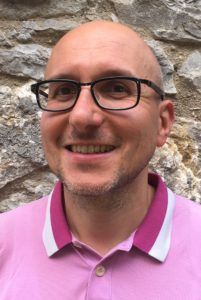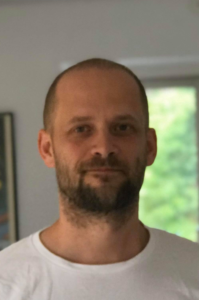From left to right: Kurt Gothelf , Emiliano Clo and Thorbjørn Nielsen
Introducing the researchers:
Thorbjørn Nielsen: Obtained an MSc. Degree from the Gothelf lab in 2016. He then enrolled in a joint PhD program between Novo Nordisk in Måløv and Aarhus University where he spent half of his time in each place. He graduated in 2020 and is currently a postdoc at the Gothelf lab.
Kurt Gothelf graduated in 1995 from the group of Professor K. A. Jørgensen at Aarhus University. Following a post doctoral stay in Professor M. C. Pirrung’s group at Duke University, USA, he joined the faculty at Aarhus University in 2002 as an Associate Professor. Since 2007 he has been a Full Professor working with bioconjugation, DNA nanotechnology and biosenors. Find out more on his lab webpage.
Emiliano Clo obtained his PhD in Organic Chemistry in 2006 from the Gothelf lab at Aarhus University. He took post doctoral positions from 2007-9 with Prof. Knud Jensen at University of Copenhagen and from 2009-12 in Prof. Henrik Clausen’s Copenhagen Center for Glycomics, spending the last year of which as Research Associate Professor. From 2012, Emiliano works as a Senior Research Scientist at Novo Nordisk’s Research Chemistry Unit.
What inspired your research in this area?
Bioconjugation is challenging and both at Novo Nordisk and in the Gothelf group at Aarhus University we follow closely the development of bioconjugation techniques. Itaru Hamachi’s work on directed conjugation strategies has definitely been a steady influence over the years. But, the present study is really an amalgamation of ideas from many sources.
What do you personally feel is the most interesting outcome of your study?
The most surprising observation was to learn that the conjugation pattern was identical, in spite of the varying the length of the three reagents studied.
How do you feel your research has benefitted from collaborating between industry and academia?
It has been of key importance to the project. Thorbjørn Nielsen (who got his MSc. with Prof. Gothelf) brought the required skillset to Novo Nordisk. Novo Nordisk then provided the materials and equipment required for this project. Together we could pull all the support the projected needed: MS-MS and SPR expertise at Novo Nordisk; cell assays and FACS from Aarhus Unversity. Last, but not the least, Apigenex, Novo’s long-time CRO partners, synthesized the reagents needed.
What directions are you planning to take with your research in future?
Concerning bioconjugation, our future aims are twofold. First, to find reactions that can label proteins quantitatively; second, to devise reagents and protocols that can be applied to more complex proteins or in more complex matrices.
Read the full article: disulphide-mediated site-directed modification of proteins
See the other articles showcased in this month’s Editor’s Collection













